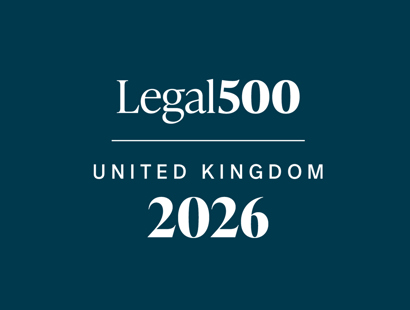
Temporary and short term uses of land—is planning permission needed?
Many private and public landowners are increasingly turning to temporary use as a way of generating additional income and to become self-funding.
The High Court decision in R (Shaman) v London Borough of Lambeth has garnered interest in the legal framework surrounding planning permissions for temporary uses, particularly in the context of festivals, events, and other short-term uses of open land.
In this briefing, partner Alex Ground and trainee Alex Wright examine the case in more detail, and explore what the increasing reliance on temporary uses of land by both public and private landowners means in the context of planning law.
R (Shaman) v London Borough of Lambeth
The case centred on whether the use of Brockwell Park for a series of music festivals had exceeded the 28-day limit allowed under permitted development rights (Part 4, Class B of the GPDO 2015), which allow temporary changes of use of land without full planning permission. The court found that the Lawful Development Certificate issued by Lambeth was unlawful, as the event organisers had exceeded the 28-day limit once setup and breakdown time were included. Importantly, the judge focused not on the nature of the temporary use itself, but on the exclusion of the land’s normal use - public recreation - during the extended period of occupation. Potential planning consents which would make up the additional days that the land would be out of use were irrelevant, as was continuity with other events such as the Lambeth Country Show.
This case highlights a tension in planning law: how to accommodate temporary, placemaking-oriented uses such as festivals, markets, and installations within a system primarily designed to regulate permanent changes to land use.
When is planning permission needed for a change of use?
Under section 55 of the Town and Country Planning Act 1990, planning permission is required for any ‘material change of use’ of land or buildings. Whether a change is material depends on if it has a significant impact on the character of the land; factors such as the nature and scale of the new use, its impact on the surrounding area, and the duration and frequency of the activity. Case law has established that even temporary or intermittent uses can be material if they significantly alter the character of the use of the land.
What do permitted development rights allow?
Under Part 4, Class B of the Town and Country Planning (General Permitted Development) Order 2015, landowners may temporarily change the use of land for up to 28 days per calendar year without full planning permission. This includes uses such as festivals, fairs, or temporary markets. The rights also permit associated operational development, for example, the erection of temporary structures like stages, fencing, or portable toilets, provided they are necessary for the permitted use and comply with relevant limitations.
When is planning permission needed, and is a temporary consent easier to secure?
While permitted development rights offer a streamlined route for short-term uses, they are often insufficient for more complex or longer-duration events. In such cases, a full planning application conditioned for a time-limited period may be required. This allows local authorities to assess impacts on amenity, transport, ecology, and heritage, and to impose conditions to manage ‘build and break’ periods.
The Planning Practice Guidance (PPG) recognises this need, stating that temporary permissions may be appropriate:
- where a trial run is needed to assess impacts
- where planning circumstances and expected to change
- to enable 'meanwhile' uses of vacant or underutilised land.
Where reversion to the original use is expected, this should be made explicit in the conditions attached to the permission, setting out removal, discontinuance of use and reinstatement of the land under s72(1) of the Town and Country Planning Act 1990. Section 57(2) provides that planning permission is not required for the resumption of the land’s previous use at the end of that period. However, where the previous use has not yet commenced (e.g., a permission has been implemented but the use is not active), there may be uncertainty as to whether it qualifies as the ‘normal’ use under s57(2). To mitigate this risk applicants may seek a Certificate of Proposed Lawful Development (CLOPUD) confirming that resumption of the previously permitted use will be lawful. This can be submitted alongside the temporary planning application, with a request for a condition confirming reversion to the previous lawful use at the end of the temporary period.
Two case studies on temporary use: Maria Fidelis School and Archway Campus
The Starcross Yard project at the Maria Fidelis School Site in Euston provides a useful illustration of how temporary permissions can be used to support community needs during periods of major redevelopment. The site, located close to the HS2 construction area, benefits from temporary planning permission for a mixed ‘meanwhile use’ including a community facility and open space, granted in line with national and local policy objectives.
The site lies within the Euston Area Plan and is directly affected by HS2 construction, which has disrupted existing land uses and delayed comprehensive redevelopment. The 10-year permission (from 1 November 2021) allows the site to be used productively in the interim without prejudicing future master planning. A condition requires the site to revert to its former use (Class D1) at the end of the term, reinforcing its temporary legal status.
The proposed uses, including a Construction Skills Centre (CSC), SME office space, a community hall, and public open space were specifically designed to support the local community during a period of disruption. The CSC replaces the King’s Cross CSC and is funded in part by HS2 as a mitigation measure, offering training and employment pathways for local residents. These uses align with the Euston Area Plan (Policy EAP1), which supports temporary uses that enhance vitality and do not inhibit long-term redevelopment.
By contrast, an appeal for the temporary use of “Archway Campus” on Highgate Hill in 2024 (ref: APP/V5570/W/23/3326166) was dismissed. The Inspector found that the proposed 2-year use for artists’ studios would clash with the site’s strategic allocation for housing. Even though the proposed use would be transient, it was seen as impeding the progression of the site toward its long-term residential function. The inspector emphasised that the temporary use would delay housing delivery and that there was insufficient evidence that this meanwhile use could coexist with redevelopment.
The proposal failed to meet the criteria in Local Policy R9B, which required that temporary uses must not preclude permanent development. It is of note that to date redevelopment of the site for housing has not been approved, although there is an application under consideration (P2024/2598/FUL.)
Importance of planning policy
National policy offers light-touch guidance on temporary uses outside of permitted development, leaving their appropriateness largely to local policy and discretion. In London where land use is often intensified and dynamic, temporary uses are actively encouraged particularly where they deliver public benefit and do not conflict with long-term strategic goals.
The London Plan and associated GLA guidance promote meanwhile uses in regeneration areas, with key principles including:
- Supporting community resilience, economic activity, and placemaking
- Activating vacant land and buildings temporarily
- Allowing flexibility in use classes (e.g. Class E for pop-ups, co-working, cultural uses)
- Using Section 106 agreements or CIL funding to support infrastructure for meanwhile uses.
Key considerations emerge for decision-makers assessing temporary proposals:
- Reversibility: can the land be returned to its original condition or use at the end of the permission?
- Impact on long-term land use: does the temporary use delay or obstruct a strategic objective? In the Archway Campus decision, the Planning Inspector found that the temporary use would impede housing delivery.
- Policy alignment: does the proposal support or conflict with the development plan
- Evidence of temporary need: is there a demonstrable need for the temporary use, and can it coexist with future development?
- However, there are appeal decisions where it has very clearly been held that temporary uses, in particular for housing, must still comply with other policies, for example, on design and quality.
Developers must be careful to work with the LPA to strike the right planning balance with policy requirements for meanwhile uses and to retain viability.
When to consider taking advice
Temporary and meanwhile uses can offer valuable opportunities to activate vacant sites and support local communities. However, they also raise complex legal and policy considerations. Professional planning advice should be sought in the following circumstances:
- Where the site has a strategic allocation (e.g. housing, employment, infrastructure) and the temporary use may conflict with or delay delivery of that allocation.
- When drafting or interpreting planning conditions, to ensure the temporary use is time-limited, reversible, and does not prejudice future development.
- Where there is uncertainty about permitted development rights, use class changes, or the need for full planning permission.
- In rural areas, where temporary uses may be subject to stricter environmental or landscape protections, and where national policy may differ from urban frameworks.
- When responding to or preparing for planning appeals, especially where temporary use is challenged on grounds of strategic conflict or lack of community benefit.
Conclusion
The Brockwell Park case is a reminder that temporary use can still be subject regulation in planning terms (whether authorised as a result of permitted development rights or a temporary planning permission): it must be carefully justified, especially where it displaces existing public functions and any reliance on permitted development rights carefully explained. Meanwhile, the above decisions show that temporary land use alone does not make a proposal acceptable. What matters is how the temporary use fits within the wider timeline of the land. As local authorities and developers continue to explore creative, short-term uses of land, a clear understanding of these principles and the evidential burden they entail will be essential.
Get in touch
If you would like to speak with a member of the team you can contact our real estate planning and construction solicitors; Holborn office (Email Holborn) +44 (0)20 3826 7523; Kingston office (Email Kingston) +44 (0)20 3826 7518; Putney office (Email Putney) +44 (0)20 3826 7518 or complete our form.










